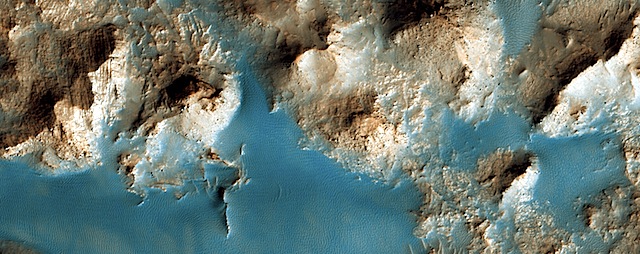 The appearance of an impact crater depends on several factors, including the material in which the crater was formed and the size of the impact itself. This image covers a rocky peak in the center of an unnamed crater, approximately 40 kilometers across.
The appearance of an impact crater depends on several factors, including the material in which the crater was formed and the size of the impact itself. This image covers a rocky peak in the center of an unnamed crater, approximately 40 kilometers across.
When crater diameters on Mars exceed 5 to 8 kilometers, their shape changes from a simple, bowl-like depression to a more complex form. Rocks under the center of the crater rise as they rebound from the impact shock, lifting materials from below the surface to a peak in the center of the crater. This uplift of rocks from depth provides scientists a window into the composition of the subsurface, making crater central uplifts interesting targets for HiRISE images. [More at link]








